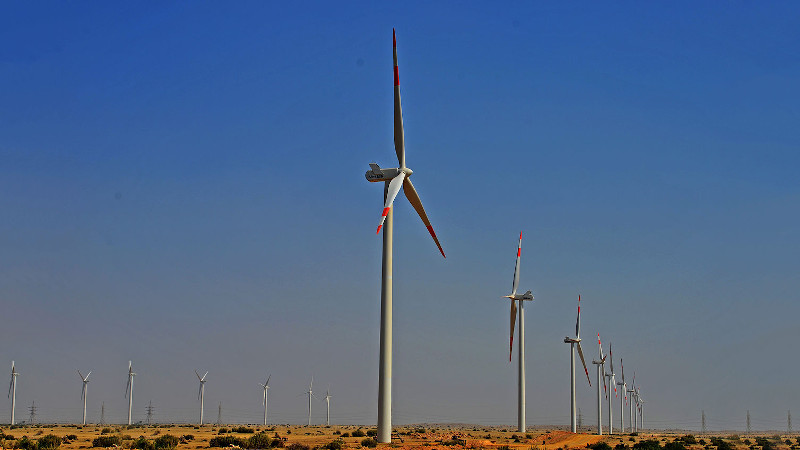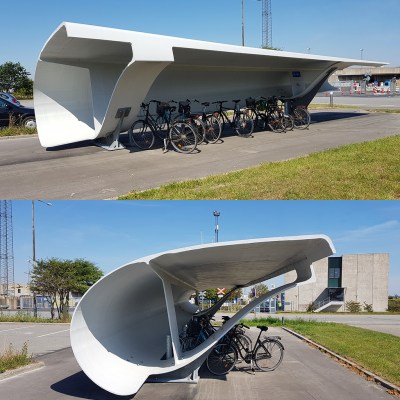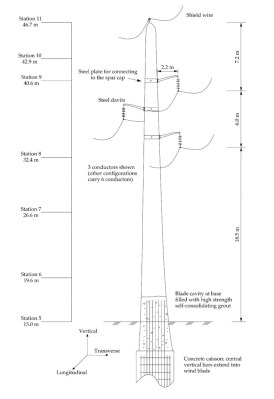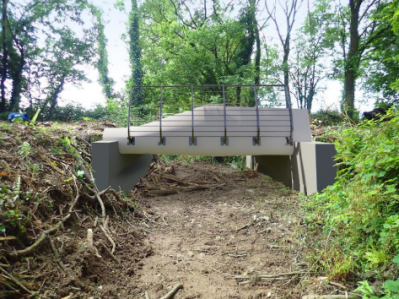
Wind turbines are a fantastic, cheap, renewable source of energy. However, nothing lasts forever, and over time, the blades of wind turbines fatigue and must be replaced. This then raises the question of what to do with these giant waste blades. Thankfully, a variety of projects are exploring just those possibilities.
A Difficult Recycling Problem
Around 85% of a modern wind turbine is recyclable. The problem is that wind turbine blades currently aren’t. The blades last around 20 to 25 years, and are typically made of fiberglass or carbon fiber. Consisting of high-strength fibers set in a resin matrix, these composite materials are incredibly difficult to recycle, as we’ve discussed previously. Unlike metals or plastics, they can’t just be melted down to be recast as fresh material. Couple this with the fact that wind turbine blades are huge, often spanning up to 300 feet long, and the problem gets harder. They’re difficult and expensive to transport and tough to chop up as well.

Thus, the Re-Wind project is looking more towards reuse than recycling. Rather then spending energy and time breaking down turbine blades back into reusable raw materials, the project is exploring uses where the blades may be modified and repurposed while remaining largely in their existing form.
A variety of projects have been proposed thus far. Perhaps the simplest is a project by wind turbine manufacturer Siemens Gamesa. The company took a used wind turbine blade, and fashioned it into a sleek and modern looking bike shed in Denmark.
The blade was cut and shaped in order to act as an effective break for the wind and rain, and was able to be quickly installed as a single pre-fabricated piece atop a pair of custom-built metal supports. It’s a quick and easy way to build a shed or shelter, for sure, but unlikely to be a solution that scales well. As the company itself notes, it’s a “small-scale solution,” but one that makes good use of a few scrap blades nonetheless.
The Re-Wind project aims to explore broader uses, with the BladePole concept one of the most interesting. The aim is to reuse wind turbine blades as electrical transmission poles. A paper on the topic shared by Re-Wind highlights the fact that while strength and stiffness are lost in turbine blades due to fatigue loads in their service life, this is only on the order of 10-20% by retirement. In a application such as serving as a utility pole, the dynamic loading would be significantly less, and the overall static loads lower as well. Thus, the blades could potentially serve a useful second life in this application.

There are some caveats, however. To be effective at scale, and to avoid giving utility engineers massive headaches, ideally blades repurposed in this fashion would all be of the same size, shape and construction. Given the broad variance in wind turbines installed around the globe, this isn’t the case. However, this isn’t an insurmountable obstacle so much as it is an added frustration to the reuse effort. However, if a utility did find itself employing broad numbers of the same turbines, it could then reuse its own waste stream to build out its network in future. It’s potentially a very neat solution.
Other concepts are in development too, such as using the blades in construction applications. The Re-Wind project has explored ideas such as using blade sections as roofing for small houses or as girders to build small bridges under 50m in length. Thus far, these efforts remain largely speculative.
However, for more serious structural applications, several problems are faced. One noted in a paper by Kullberg and Nygren, 2020, is that wind turbine manufacturers hold the finer details of their blade designs as closely guarded secrets. This frustrates efforts to properly engineer new projects using the blades, as it’s difficult to run accurate calculations without a proper knowledge of the materials being used. There’s also the concern of damage and fatigue that a blade may have incurred in service. Cracks or other defects may have built up over time and one used blade may not be as tough as the next. Thus, conservative safety factors would have to be used in designs, or blades would need to be carefully inspected to ensure they were up to reuse in structural applications. The prospect of further degradation of the composite parts already exposed to 20 years of UV and weather is also something that must be accounted for.
An Uncertain Future

That hasn’t stopped all reuse projects, however, with the Wikado Playground in Rotterdam, Amsterdam famously putting old blades to great use. However, a few children running about is not quite the same loading that a bridge or other structure may see. Thus, wind turbine manufacturers and engineers will likely have to learn to work together if used turbine blades are going to see any real structural use en masse.
It may yet be that the issue of composite recycling is solved and thus reuse efforts will play only a minor role in disposing of wind turbine blades going forward. Efforts like the RecycleBlade from Siemens Gamesa hope to do just that, using new advanced resins to enable easier recovery of raw materials. However, for the time being, research will continue on both recycling and reuse streams until a viable path forward is found. In the meantime, expect to see some creative efforts making good use of these gigantic composite structures!
[Main image: Jhimpir Wind Farm by Muzaffar Bukhari CC-BY-SA 2.0]
0 Commentaires